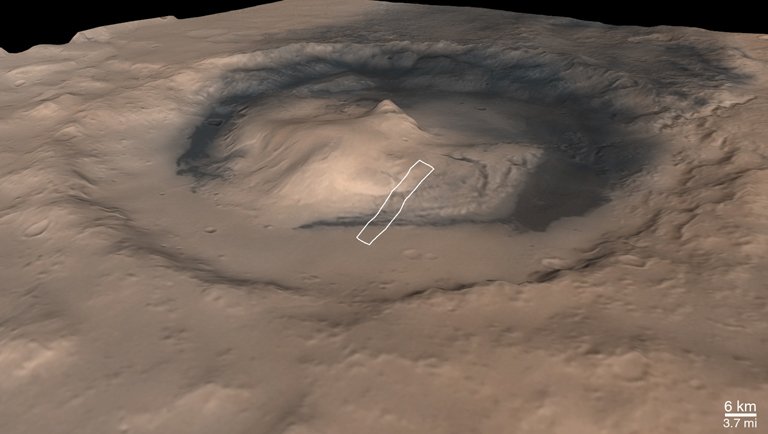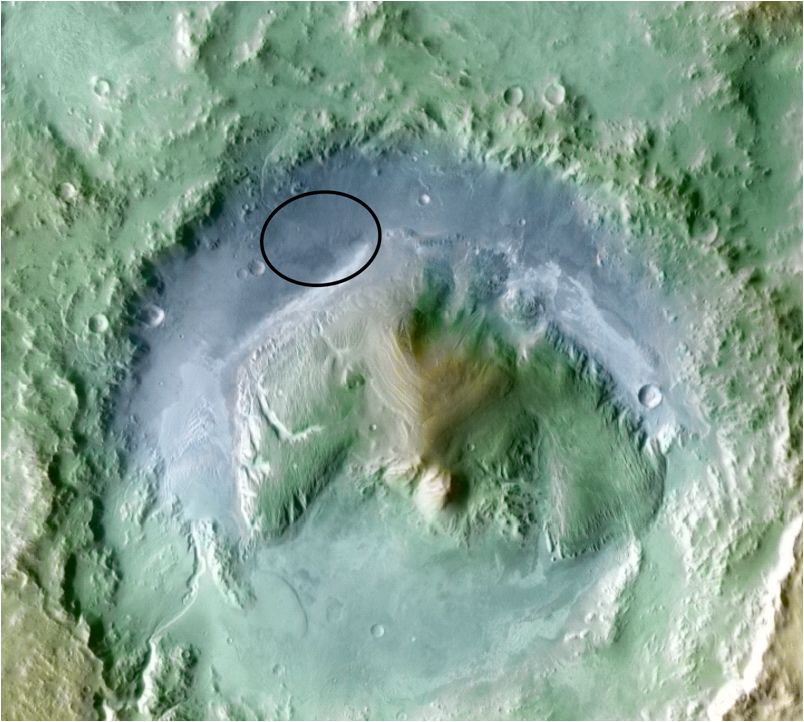
NASA's next Mars rover is a rolling chemistry and geology laboratory, but it may prove to be an expert mountain climber as well.
The car-size Curiosity rover is due to launch Saturday (Nov. 26) on a mission to assess whether the Red Planet is, or ever was, capable of supporting microbial life. In the course of its duties, Curiosity could end up at the summit of a 3-mile-high (5-kilometer) mountain near its landing site, provided it keeps chugging for long enough, researchers said.
"We think the slopes are gentle enough that if you took an appropriately circuitous route, you could make it to the top of the mound," John Grotzinger of Caltech, project scientist for Curiosity's $2.5 billion Mars Science Laboratory (MSL) mission, told reporters yesterday (Nov. 22). "But that's way into the future."
Investigating Gale Crater

Curiosity is due to touch down on Mars in August 2012, landing at a 100-mile-wide (160 km) crater called Gale. At Gale's center is a mound of sediment rising 3 miles into the Martian air — nearly half the height of Mount Everest, and taller than any peak in the contiguous United States.
This mound grew by deposits over a span of 1 billion years or so, researchers said. By examining the mountain's different layers, Curiosity could help scientists understand how the Red Planet has changed over time. [Photos: Gale Crater, Curiosity's Landing Site]
"We're basically reading the history of Mars' environmental evolution," Grotzinger said.
Get the Space.com Newsletter
Breaking space news, the latest updates on rocket launches, skywatching events and more!
The robotic vehicle will use 10 different science instruments to read this history. It will search for organic chemicals — the carbon-containing building blocks of life as we know it — and perform in-depth geological characterizations of Gale's dirt and rock.
Curiosity's nominal mission is slated to last for two Earth years. During that span, the rover is likely to spend a lot of time studying the mound's lower reaches. Mars-orbiting spacecraft have spotted evidence of clays and sulfates, minerals that form in the presence of liquid water, in those older sections.
Higher up, the mound seems to indicate a dusty and dry Mars, more similar to conditions on the Red Planet today, researchers said.
"We feel confident that within two years we can achieve a level in the mound that's probably 350, 400 meters up" (about 1,100 to 1,300 feet), Grotzinger said. "At that point, the rocks seem to change dramatically."
Climbing the mountain?
But Curiosity may not be content with life in the foothills of Gale Crater's mountain. If the rover significantly outlasts its warranty, it might be able to climb all the way to the top, which is roughly 400 meters higher than the summit of California's Mount Whitney, researchers said.
"Think of it as Hawaii," Grotzinger said. "It's as tall as Mount Whitney, but it has the slopes of Hawaii, which are gentle enough for the rover."
Curiosity is engineered to travel a maximum of about 200 meters (650 feet) per day on Mars, so it would need a lot of time to summit the sediment mound. But it's not unreasonable to suspect the rover will last longer than two years on the Red Planet.
The mission team built Curiosity and its equipment to last six years or more if all goes well, officials have said. And the rover's immediate predecessors, the golf-cart-size twins Spirit and Opportunity, far outlasted their warranties.
Spirit and Opportunity landed on the Red Planet in January 2004 on three-month missions to search for evidence of past water activity. NASA declared Spirit dead just this year, and Opportunity is still going strong.
All of this speculation assumes that the MSL team would regard climbing Gale Crater's mountain as the best use of Curiosity's extended time. That's certainly not a given. But here's one thought that could sway them: If the rover does summit the mound, just think of the view.
You can follow SPACE.com senior writer Mike Wall on Twitter: @michaeldwall. Follow SPACE.com for the latest in space science and exploration news on Twitter @Spacedotcomand on Facebook.
Join our Space Forums to keep talking space on the latest missions, night sky and more! And if you have a news tip, correction or comment, let us know at: community@space.com.

Michael Wall is a Senior Space Writer with Space.com and joined the team in 2010. He primarily covers exoplanets, spaceflight and military space, but has been known to dabble in the space art beat. His book about the search for alien life, "Out There," was published on Nov. 13, 2018. Before becoming a science writer, Michael worked as a herpetologist and wildlife biologist. He has a Ph.D. in evolutionary biology from the University of Sydney, Australia, a bachelor's degree from the University of Arizona, and a graduate certificate in science writing from the University of California, Santa Cruz. To find out what his latest project is, you can follow Michael on Twitter.









